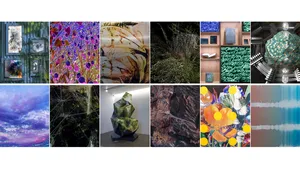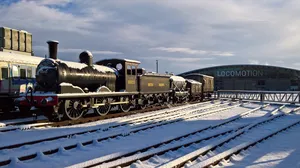Commemorating the end of World War II with the Smithsonian

Is a picture truly worth 1000 words? History answers yes, as posters of political imagery help shape worldviews and educate the public on the past and present. On this day commemorating the 75th anniversary of the end of World War II, we are proud to launch the collections of the Smithsonian National Museum of American History on Google Arts & Culture, making more than 15,000 posters available online to everyone for the first time.
Now, viewers around the world have access to newly digitized posters in high resolution that offer a unique look at American history, ranging from the recruitment for Red Cross nurses in World War I and iconic World War II posters of Rosie the Riveter in the Smithsonian National Museum of American History Archives Center’s Princeton University Posters collection, to Get Out the Vote posters in the Museum’s Political History collections from the 1990s. As one of the largest collections of U.S. political and war posters spanning more than 100 years, these will support a fuller understanding of politics, propaganda, and protest, as well as the history of graphic and artistic technique.
This collaborative project took 18 months to complete, from the beginning of the digitization to today, and included alongside these newly available posters are more than 20 incredible stories crafted by the museum’s staff. From explorations into the use of motifs like the American Flag in 20th century posters or the figures of Liberty and Victory in French propaganda, to examinations of the ways posters helped construct gender roles and configure masculinity, they provide expert insight and context into the essential roles posters have played throughout history.
The poster collections are launching alongside a new collaborative project by four Smithsonian museums, World War II: The Flying Frontier, that presents a deep dive into the key role aviation played in World War II. Bringing together more than 40 curated stories from the Smithsonian collections covering historical moments, planes, pilots, and posters—including 3D panoramas of historic plane cockpits from the Smithsonian National Air and Space Museum, a commemoration of the life of the Tuskegee Airman Lt. James L. McCullin Jr. from the Smithsonian National Museum of African American History and Culture, and an in-depth exploration of the essential role played by Native American Code Talkers from the Smithsonian National Museum of the American Indian—the project brings a new perspective on the events of the war that continue to shape the world we live in today, 75 years after a return to peace.
A World War I era recruitment poster for the Red Cross - Smithsonian National Museum of American History
Featuring the now iconic image of Rosie the Riveter, this World War II poster encouraged women to take wartime jobs in defense industries - Smithsonian National Museum of American History
Pictured here are Barbara Jane Erickson, in cockpit, and Evelyn Sharp, both members of the Women Auxiliary Ferrying Squadron (WAFS) - Smithsonian National Air and Space Museum
This memorial quilt was made in honor of Lt. James McCullin. Lovingly crafted by his sister, Vivian Lucille McCullin, it commemorates the life of the distinguished Tuskegee Airman - Smithsonian National Museum of African American History and Culture
During World War I and World War II, the U.S. Government recruited Native Americans to develop secret communications using their traditional tribal languages. Pictured here are two Navajo Code Talkers who served in World War II - Smithsonian National Museum of the American Indian
Benjamin O. Davis Jr was a member of the first class of five cadets to earn their wings at Tuskegee, and went on to lead the new 99th Pursuit Squadron, the Army Air Corps' first all-black air unit - Smithsonian National Air and Space Museum
A poster from the 1996 United States presidential campaign, encouraging citizens to register to vote - Smithsonian National Museum of American History
This poster from the 2017 Women’s March was digitized as part of the National Museum of American History Archives Center’s Princeton University Posters collection - Smithsonian National Museum of American History
Learn more about aeronautics and aviation in World War II on the World War II: The Flying Frontier project page, and explore all of the newly digitized posters in the National Museum of American History’s collections on Google Arts & Culture.






